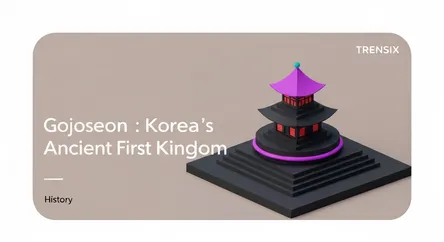History
Gojoseon: Korea's Ancient First Kingdom

Discover Gojoseon, the first kingdom of Korea. Learn about its legendary founder Dangun, its Bronze Age culture, and its foundational role in Korean identity.
What is it?
Gojoseon was the first kingdom on the Korean Peninsula, existing from the Bronze Age until 108 BCE. Its name means "Old Joseon" to distinguish it from the later Joseon Dynasty. According to Korean mythology, it was founded in 2333 BCE by Dangun Wanggeom, the son of a heavenly prince and a bear-woman. While this founding date is legendary, historical and archaeological evidence confirms Gojoseon was a powerful state by the 4th century BCE, with a distinct culture known for its mandolin-shaped bronze daggers and megalithic dolmen tombs. It developed from a confederation of tribes into a centralized monarchy, eventually falling to China's Han Dynasty.
Why is it trending?
Gojoseon remains a topic of interest as it is the foundational state of Korean history and identity. The founding myth of Dangun is a powerful symbol of the Korean people's ethnic origins and unity. South Korea's National Foundation Day on October 3rd commemorates Dangun's establishment of the kingdom. Furthermore, ongoing archaeological research continues to shed light on this ancient civilization, creating interest. The history of Gojoseon is also significant in the context of East Asian history, particularly in its interactions and conflicts with neighboring Chinese states, which set a precedent for future relations.
How does it affect people?
The legacy of Gojoseon profoundly shapes modern Korean identity and nationalism. For Koreans, it represents the starting point of their nation's long and independent history. Schoolchildren in both North and South Korea learn the Dangun myth, instilling a sense of shared ancestry. This historical memory is often used to assert Korea's unique cultural heritage. The kingdom's establishment is viewed as the bedrock of Korean civilization, and its political and social structures are considered the models for subsequent Korean states that followed its collapse.